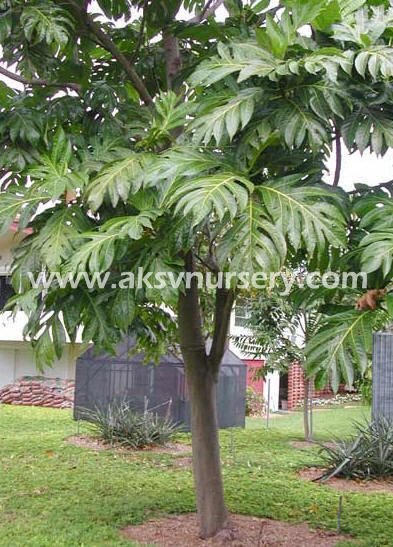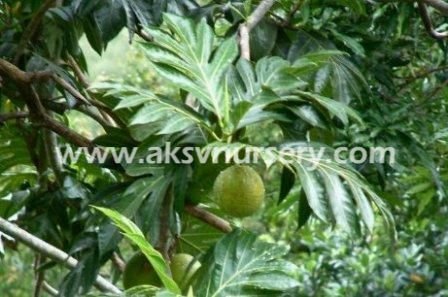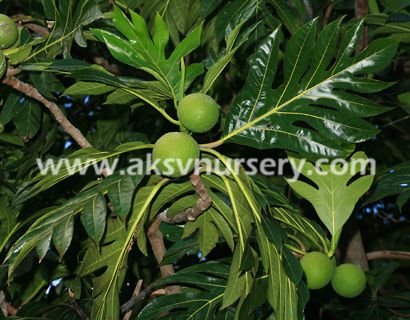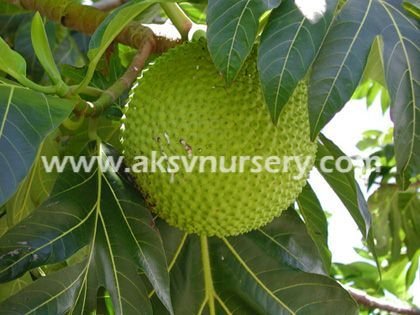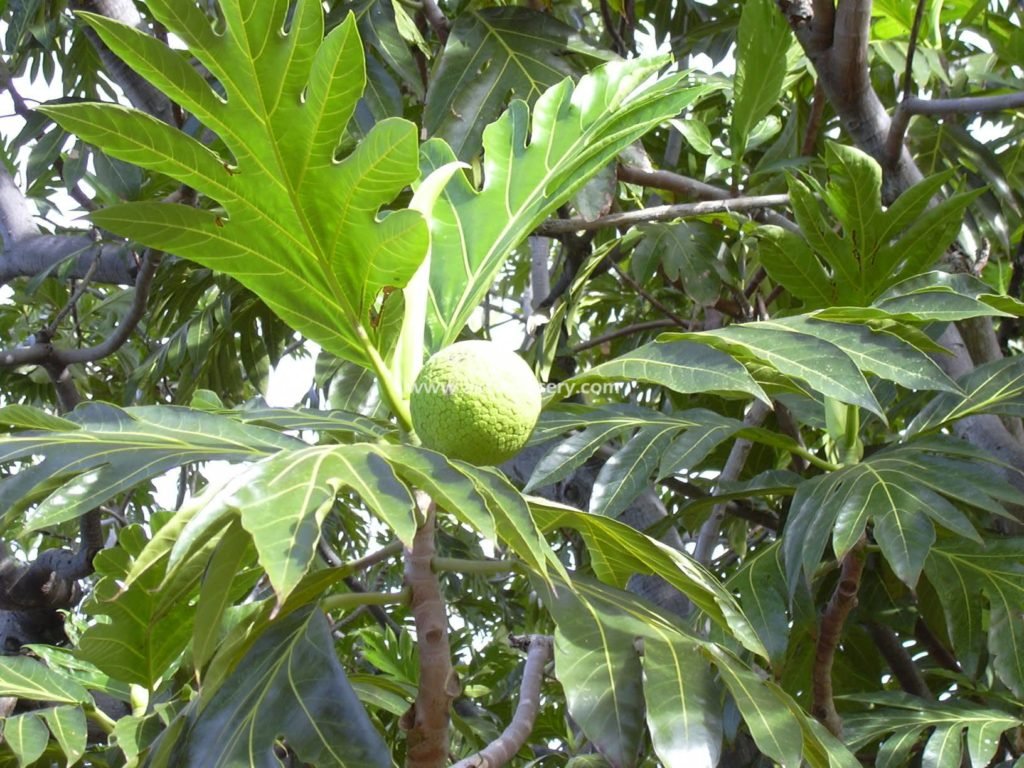Artocarpus altilis, Artocarpus communis
Family: Moraceae
Breadfruit
Origin: New Guinea
The breadfruit is fast growing tree, reaching up to 80-100 ft in height, with a trunk up to 6 ft in diameter, though some varieties are smaller. The leaves, evergreen or deciduous depending on climatic conditions, are ovate up to 3 ft long more or less deeply cut into many pointed lobes. They are bright-green and glossy on the upper surface, with conspicuous yellow veins and dull, yellowish and coated with minute, stiff hairs on the underside. Flowers are tiny and similar to jackfruit. The male densely set on a drooping spike 5 to 12” long, yellowish at first and becoming brown. The female are massed in a rounded or elliptic, green head, about 3” long, which develops into the compound fruit. Fruit can be oblong, cylindrical, ovoid, rounded or pearshaped, 3 to 18” in length. Generally the fruit is green at first, turning yellow or yellow-brown when ripe. When fully ripe, the fruit is somewhat soft, the interior is cream colored or yellow and pasty, also sweetly fragrant. All parts of the tree, including the unripe fruit, are rich in milky, gummy latex. There are two main types: the normal, “wild” type (cultivated in some areas) with seeds and little pulp, and the “cultivated” (more widely grown) seedless type, but occasionally a few fully developed seeds are found in usually seedless cultivars. The seeds are oval about 3/4” long, dull-brown with darker stripes. Breadfruit can be eaten raw or cooked. It is an important source of carbohydrates or “starch” and is a dietary staple in some places, especially Polynesia. The moist inner pulp of seedless forms (breadfruit) is eaten after cooking, and has the taste and texture of potatoes. The seeds of the seeded (breadnut) form are also cooked (boiled or roasted). In the West Indies a decoction of the leaves is used to lower elevated blood pressure and to relieve asthma. The shoots, bark and latex have also medicinal applications





